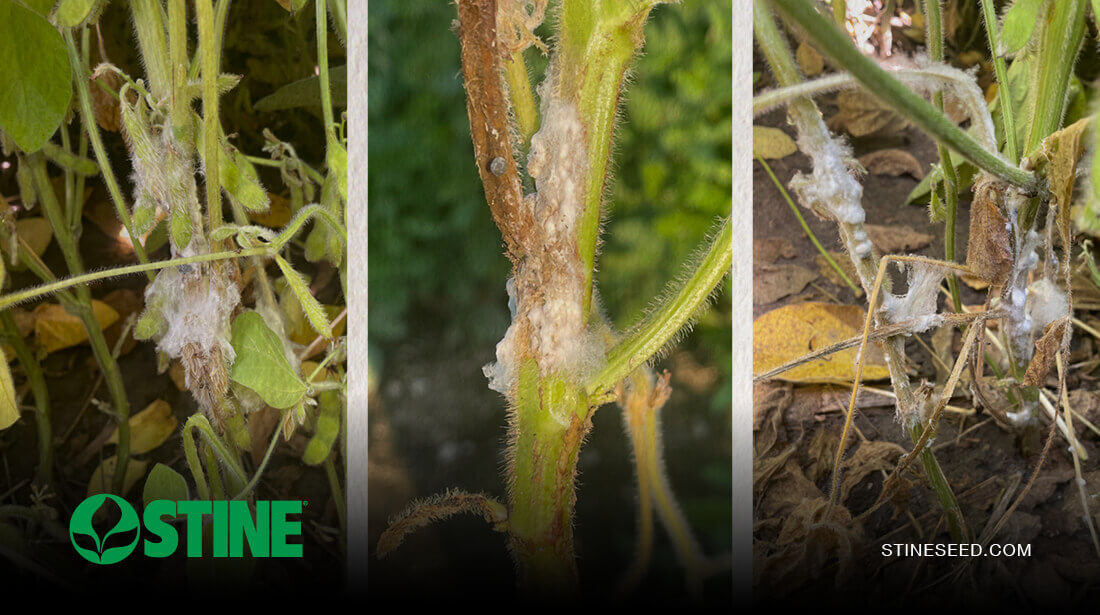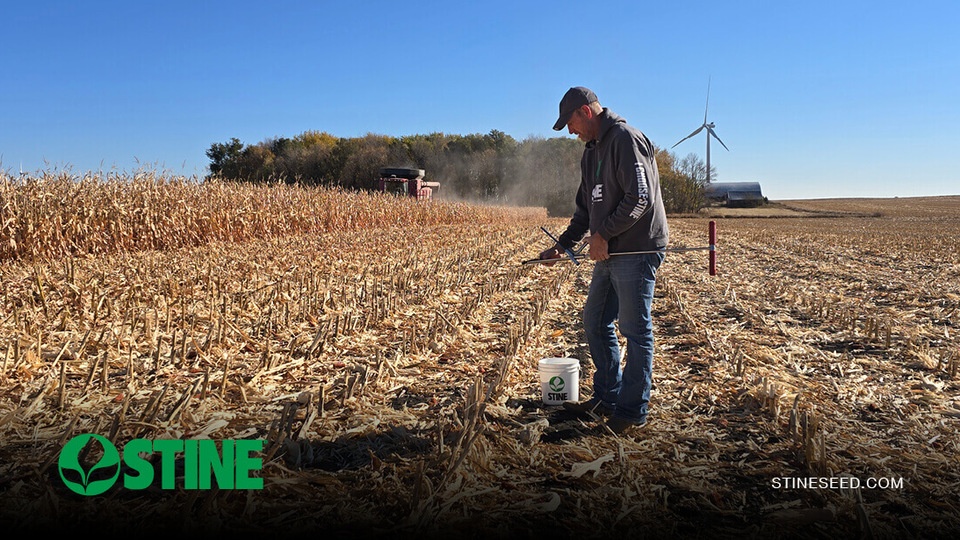Heavy rain and dense canopies are pointing to a higher risk of white mold in soybeans this season, especially in the northern and central growing regions where the fungus thrives. Stine agronomists and sales reps are already hearing reports of the disease in various locations.

White mold, or Sclerotinia stem rot, can lead to significant yield loss if not managed proactively. In the last decade, it has routinely ranked among the top U.S. soybean yield-reducing diseases, causing multimillion-bushel losses.
With infections happening during flowering and early pod fill, now is the time to scout and take action.
“This year’s recent weather has been ripe for white mold conditions. It’s creating the perfect storm.”
Tyler DuBay, Stine soybean technical agronomist
White mold isn't just a local concern. It's a regional issue. The pathogen overwinters in soil or bean residue then produces apothecia (“mini mushrooms”) that launch spores onto open flowers during the R1–R3 stages. Rainy, cloudy conditions are extending bloom windows, priming 2025 for disease spread.
And when wet conditions coincide with bloom, white mold becomes more than possible — it becomes probable.
What you can do now
- Map your fields. Identify history and hot spots. The Crop Protection Network's ROI calculator is free and lets you model your input costs versus expected yield benefits.
- Scout during bloom. Spend 30 minutes daily focusing on canopy moisture and early stem lesions.
- Get ready to spray. If risk is high (especially during R1–R3), schedule fungicide applications and ensure thorough canopy coverage.
- Plan rotation and cropping strategy. Fields with repeated white mold incidence should be rotated away from soybeans for one or even two years to help rid them of sclerotia.
What you can do next
According to DuBay, integrated management is key. “A proactive blend of tolerant varieties, smart planting strategies and timely fungicide use can protect yield, hedge risk and boost ROI,” he says. “Even in a tough year like this.”
Here’s a field-tested mix of tools to get (and stay) ahead of white mold:
- Risk assessment. Use tools like the White Mold ROI Calculator. It helps you weigh the cost of fungicides against expected yield loss.
- Variety choice and planting strategy. Choose soybean varieties with moderate white mold tolerance. And don't overlook management techniques: Lower seed density, wider rows and delayed planting can reduce canopy humidity inside the critical window.
- Fungicide timing. Plan sprays around the bloom window, especially at R1 and possibly again at R3 — but start no later than early pod set.
- Rotation and residue management. Rotate to corn or small grains every 2–3 years. Manage residue thoughtfully; though tillage can bury sclerotia, no-till keeps them near the surface to degrade. Both approaches have pros and cons.
- Cleanup and harvest practices. Harvest infected fields last, clean equipment thoroughly and consider sanitizing seed to avoid spreading sclerotia.
White mold may be a seasonal wild card, but it doesn't have to be a yield killer. Tip the scales in your favor! Visit StineSeed.com or connect with your local Stine representative for tailored strategies to monitor, prevent and manage disease pressure this season. And don’t miss our “Stine Seedcast” episodes for timely tips and agronomic guidance all year long.
Related Articles
-

Use Stine’s XP® seed treatments to prevent early injury to your crops
December 2025 in Agronomy
-

Understanding Stine’s enhanced oil profile soybeans
December 2025 in Agronomy
-

Soil sampling sets the stage for spring
November 2025 in Agronomy
-

Corn production growth paves way for more high-performing Stine® hybrids
November 2025 in Agronomy



